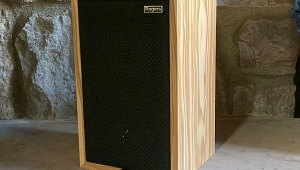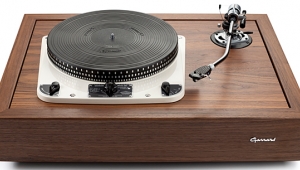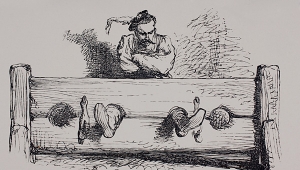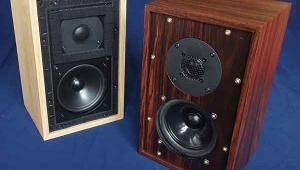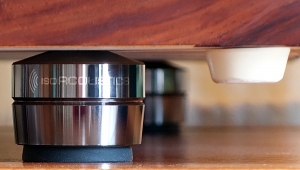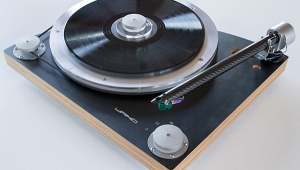| Columns Retired Columns & Blogs |
Listening #61
Whenever my family and I travel together, I catch a glimpse of how the human mind works. Immediately after checking into our hotel, my wife goes to work distributing the contents of our suitcases among the room's various cabinets, closets, and drawers. Then, the next morning, I discover the location of my underpants heuristically: seeking without knowing, in the hope that some newly learned pattern will be imprinted on my brain. Thus do I earn the luxury of complacence: Every morning thereafter, my things are right where I know they should be.
Footnote 1: The year Lester Flatt and Earl Scruggs left Bill Monroe's band to strike off on their own, remarkably enough.

That procedure is useful not only in the location of underpants but in any number of other tasks: making coffee, mowing the lawn, driving a car, writing checks, knotting a tie, long division. I can do all of those things and more because I know how. Looked at from another direction: If I had to rediscover from scratch the location of my clothes every morning, it would take me half the day to get dressed.
Fair enough—but what's good for the underpants is not so good for the hi-fi. If you've ever heard an old, obsolete audio component perform as well as or better than a brand-new, state-of-the-art product, then you've heard proof that some of the things this industry has learned about music reproduction in the past half century are hopelessly wrong and no longer worth knowing. We have to find some way to unknow them.
A case in point is the Altec 755-C loudspeaker driver, a near-perfect example of which I just scored on eBay. The 755-C is a direct descendent of the Western Electric 755-A, which, when it debuted in 1948 (footnote 1), represented the state of the art of single-diaphragm full-range drivers: smooth impedance curve, high sensitivity, and flat frequency response all the way from 70Hz to 13kHz.
But it wasn't long until the industry turned in a direction that would make the 755-A and its descendents nearly obsolete. In 1955, Edgar Villchur and Henry Kloss introduced the first AR-1 loudspeaker—a low-efficiency, multiway design in which the woofer cone's restorative force was supplied by the volume of air inside the sealed enclosure. The tightly suspended 755-A looked quaint alongside that first air-spring woofer—itself nothing more than a crudely modified WE driver—and the comparison was made all the more glaring by the fact that Villchur and Kloss chose the full-range 755-A as the tweeter for the AR-1!
The 755-C came along in 1959, by which time many of the pro and domestic audio designs that began life under the Western Electric banner were being made and sold by the recently formed Altec (for All Technical Services) Lansing Corporation. The alnico magnet of the original WE driver now gave way to a modern ceramic one—a not-uncommon change in the loudspeaker industry of the 1950s and '60s—making for both a slimmer profile and the change in suffix. Aside from that, the new 755 was much the same as the old one. Its stiff pulp cone was exactly 6" in diameter, formed with an integral high-frequency dome that measured 2" across. The driver's pole piece and voice-coil gap were vented from behind, by means of a circular opening blocked with a fine mesh fabric to prevent the ingress of foreign matter. (Compare that with the standard Lowther driver, which was sealed from behind and vented at the front—and which was and is notoriously susceptible to dust.) The 755-C's tight, triple-roll surround was made of goo-coated fabric, the pliancy of which seems virtually immune to the ravages of time.
It's also worth mentioning that the Altec 755-C is an exceptionally well-made driver—the sort of product one almost hates to hide away in a wooden box. Whether its lustrous metallic-green finish inspired amp maker Ken Shindo to adopt a similar finish for his products is an interesting question; less debatable is the fact that most other manufacturers' speaker drivers look shoddy and cheap by comparison.
Rarities
As with other high-quality American products from the late 1940s through the early 1960s, the Altec 755-C and its antecedents are prized by audio hobbyists in Japan, where pristine samples of the original Western Electric design sell for thousands of dollars apiece. There and elsewhere, the 755-C sells for less, but it's increasingly hard to come by: Weeks, even months can go by without a single one coming up for sale in the usual channels.
If the ceramic-magnet version is less revered by anachrophiles, to use the apt expression John Atkinson coined in the 1980s to describe Ken Kessler's writings, it is nonetheless well loved. Consider violinist and recording artist Joseph Esmilla, whose audio website is a hive of good information on all things 755. "I have a special fondness for the 755-C because it was the first high-efficiency driver I acquired," says Esmilla, who wound up using that and other 755 variants in a pair of enclosures based on an original OB (for open baffle) project in Stereo Sound magazine, itself the most compelling reason for any English-speaking audio hobbyist to learn Japanese. From there, Esmilla began to experiment with his own single-ended triode amplifiers, which continue to serve his domestic audio needs.
The apparent simplicity of the Stereo Sound enclosure was enough to sharpen my own interest, so when that mint 755-C went up on eBay a few months ago, I pounced—and got lucky. A few days after its arrival unscathed, my daughter and I visited the nearest Lowe's home improvement store for some very good plywood and a length of 6" pine: enough to construct the baffle plus the shallow side pieces that hold it upright. (Unable to tear myself completely away from contemporary audio ephemera, I opted for a slightly smaller enclosure than Stereo Sound's, only because I wanted its dimensions to ape the ever-popular Golden Ratio. Sad, ain't I?) Total monophonic enclosure cost: $20, plus an hour or two of my time.

The OB enclosure was designed more as a driver-testing platform than a domestically acceptable cabinet; its treble dispersion is adequate only to the extent that the angle of its baffle happens to suit the listener's seated ear height, and it's thoroughly lacking in any sort of bass-extension scheme, such as a horn or a quarter-wave pipe. Only the baffle's sheer width serves any such purpose—in this case, to help prevent dipole cancellation of low frequencies. (The 38" width corresponds with the half-wavelength of 180Hz, below which low-frequency performance can be considered a progressively losing proposition.) Still, my measured results were surprisingly good: My 44-year-old Altec 755-C (see sidebar, "Dating Decrepit Drivers"; my 755-C is stamped 391307, which indicates an Altec driver manufactured in the seventh week of 1963) was 6dB down at 63Hz and 3dB down at 12.5kHz, and encouragingly flat in between.
Footnote 1: The year Lester Flatt and Earl Scruggs left Bill Monroe's band to strike off on their own, remarkably enough.
- Log in or register to post comments


